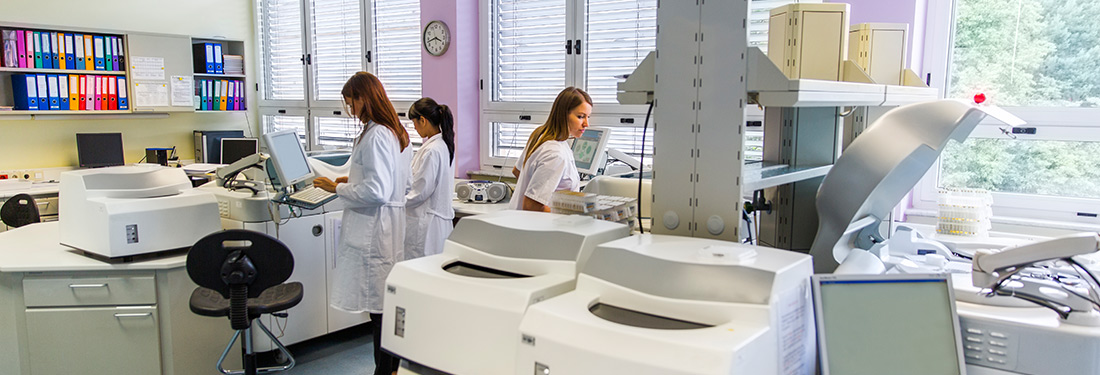What Is Heijunka in Health Care?
“Heijunka” is a Toyota Production System term defined as production leveling or smoothing. Our experience at Virginia Mason and in our work with health care clients proves that heijunka is essential to delivering the highest-quality, most patient-focused care we can provide.
We know that patients benefit from care processes that flow seamlessly between teams and departments. We also know that when processes flow continuously, less effort and fewer resources are required — not because we have intentionally cut them, but because we have defined what is truly required to perform our best work, in the most exceptional way, each and every time for our patients. The key to understanding the benefits of heijunka is a willingness to go see the actual processes and identify all of the reasons why they are not flowing continuously. When processes start and stop often, and when they flow at different rates between steps, we know that waste is present. So how do we go from where we are to where we desire to be so that we can deliver world-class care to patients?
Discovering the waste
We begin the journey to continuous, level flow by first understanding where waste exists in our current state processes. Teams are encouraged to go out onto the front line with their leader to look for and identify all of Taiichi Ohno’s Seven Wastes. The teams often return with flip charts full of sticky notes that describe flow problems and issues that bother them.
In one of Virginia Mason’s early process-improvement workshops, I was part of a team that focused on delivering timelier test results in an outpatient internal medicine department. Prior to improvement, our teams posted signs informing patients that we would notify them immediately if there were abnormal results and in about two weeks for normal test results.
As we prepared for our workshop, we talked with patients and learned that many of them wanted their normal results sooner. And our data bore that out, showing that over 50 percent of all calls to the clinic were status requests on test results — and some were from patients whose appointments had occurred only two hours earlier. As incoming calls about test results increased, providers were more frequently interrupted to respond. The volume of patients waiting to see their providers grew, and so did the volume of patients waiting to complete their visits.
We quickly learned that to improve clinic flow and access to care, we had to improve the total lead time from specimen collection to results communicated. By eliminating patient wait times for test results, we could reduce clinic call volumes and eliminate the need to interrupt care teams from their daily work. The path to improving overall access to outpatient care was linked to reducing the burden of work and smoothing the flow of everyday processes like test-results reporting.
Our current-state value stream map revealed large segments of wait time between work cycles. Some tests ordered together required different processing times; one test might have a wait of five minutes, but others required a week or more to complete all processing.
“This early effort in applying heijunka to our daily clinic practices convinced us that level production was the key to improving the health and well-being of our patients. We saw how valuable it was to go out on the front line and identify the barriers that kept us from continuous, smooth and reliable flow.”
– Chris Backous
Working toward heijunka
Our focus shifted from what we thought we needed to do to what patients wanted us to do. We decided to no longer batch results, but to send out each normal result as soon as it was received. If an additional summary of tests was required, the provider team would follow up with the patient upon receipt of all test results ordered.
After eliminating all of the unevenness and extra work of batching test results, we saw fewer interruptions for status updates and gained more than enough time to complete the new summary work. We applied the concepts of continuous flow and learned the value of reporting results just in time as a way of improving our patient access. And by removing waste and the burden of work, we were able to use more time for meaningful patient contact.
This early effort in applying heijunka to our daily clinic practices convinced us that level production was the key to improving the health and well-being of our patients. We saw how valuable it was to go out on the front line and identify the barriers that kept us from continuous, smooth and reliable flow.
How can you use heijunka in your organization?
When you look at some of your daily activities, can you identify the wastes that prevent things from flowing smoothly and reliably? I encourage you to get out on the front line with a pad of sticky notes and see what wastes are keeping your processes from flowing smoothly.
Ask yourself, “Why does this process stop?” “Why are there so many things we have to put aside before they can be finished?” The answers to these questions, and many others, are your barriers to continuous and level flow. Each barrier can be linked to Taiichi Ohno’s Seven Wastes and, as you eliminate these wastes, you will move closer and closer to continuous and level production. In other words, once you understand the value of smooth and continuous flow, you are much closer to completing today’s work today!
Originally published August 9, 2016, updated January 27, 2023






